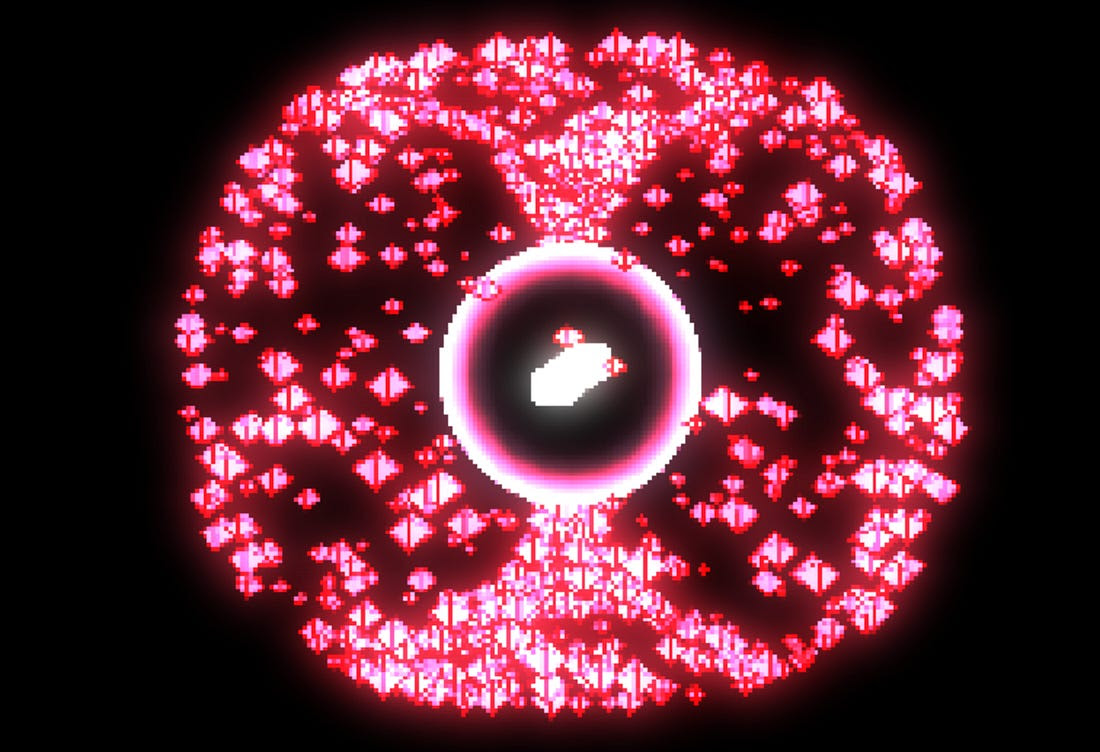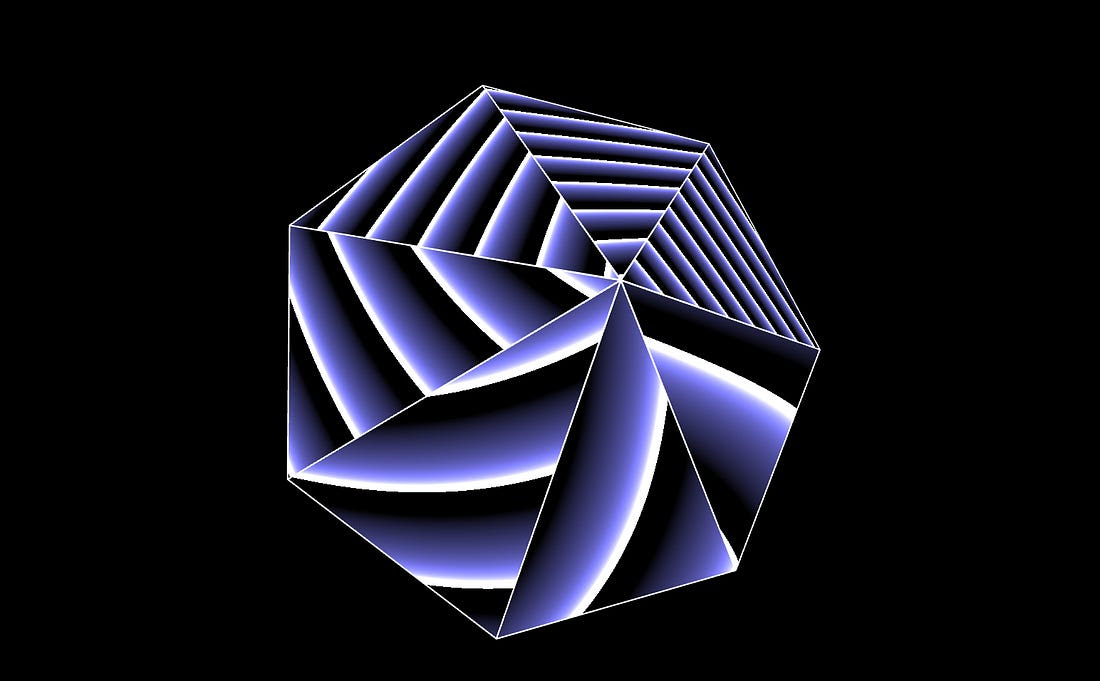An Interview with Luke Plowden and Ruiyang Wang
This week we had the good fortune to chat with London-based creative coders Luke Plowden and Ruiyang Wang. They are two high-flying coders with a love for JavaScript and will be teaching the Certified Course Bootcamp: Creative Coding 101, which starts Monday, 7th July. We spoke about learning to code, what AI means for the future of code, and what they would like to tell their younger selves.

What got you into coding?
Luke Plowden: I was doing an internship at a small studio in Amsterdam, which makes interactive and video works. At this point, I had made a few narrative films, as well as 3D animations in Blender & After Effects, but nothing involving code or interaction. They were curious about VR, so I started to learn Unreal and C++, then I just got really addicted to it and carried on learning. I went to a coding school called Codam, which taught C, and then eventually moved back to London for a master's degree in Creative Computing at UAL.
Ruiyang Wang: I got into coding because I was fascinated by generative art, the emerging pattern from simple algorithm interests me from the beginning. Coming from an engineering background, I used to write code to solve problems, targeting a specific solution, but when it comes to creative coding, it's like unleashing the full potential of code. Code is not just about solving an engineering problem; with the power of computing, you can do so much more.
What languages drew you in and why?
Luke: It was C (and C++, which I picked up alongside), because it was my first, I suppose. I quite enjoyed Unreal Engine, but I really just love working with code directly in a text editor. I like working from scratch. I discovered this when I was at the school in Amsterdam. I struggled a lot trying to get OpenGL projects working in C++, but from there, GLSL and GPU programming generally became my favourite for creative code.
Then, with JavaScript and p5.js, I found a larger project which I could crack into for the first time, and that was another draw. I could write GLSL shaders for films, joining coding with my filmmaking, with very little setup. Tools like p5.js make it so easy to get into a creative flow compared to writing C. I think JavaScript in general offers a lot in this sense, and it's a great environment to learn in.
Ruiyang: I like JavaScript because it's getting more and more powerful than ever. The benefits of working with JavaScript are that it's tightly integrated with the Web, which means your code runs almost everywhere, where there is a browser. The accessibility of the Web and the Web Art that comes with it is very important to me.
What work have you been doing in JavaScript?
Recently, I wrote p5.strands for p5.js, which is a compiler for converting JavaScript code to GLSL, and is in a way its own language (called a Domain Specific Language). Working on it, I spent a lot of time thinking about language design. I found it fascinating the extent to which a JavaScript program can rewrite itself at runtime. Kind of anything you imagine wanting to do in JavaScript, it can be done. That doesn't mean everything should be done in JavaScript, but it's all just there in the browser with very little setup to get up and running, and share with people.
A lot of artists say they'd love to code, but I can't take that time out to learn. For anyone on the fence, what would you say are the benefits for them to learn to code?
Ruiyang: Coding follows a way of thinking we call computational thinking. For artist to learn to code, it not only unlocks a powerful set of tools for their practice, harnessing the power of computation, but also introduces a new way of thinking and looking at things. It is important to understand the technology that's tightly integrated into our daily lives, as it also opens up new perspectives when you are working across different disciplines.
Luke: I just think it's fun, but like anybody who's working on a computer, and in any way creatively, it makes everything easier and faster. That's kind of a practical answer. Also, for people working on a computer to make visuals and audio, it gets you closer to the tools, and I guess you have a deeper understanding of what you're doing.
Do you feel part of a community?
Ruiyang: Yes, there are a bunch of communities around the topic of creative computing. It's exciting to see people with different focuses on their practice all come together and communicate with a common language in computing. I'm sure you will find your community, whatever you want to do with code.
Luke: Yeah, for sure. I think variously from my master's degree course and the people that I met there, but also with people who develop and maintain P5.js. I love the open-source thing. I love that a lot of people are volunteering because they just decided they like the project. It's not all good. But it's relaxing compared to other kinds of work I do in some ways, and it tickles my brain in a good way.
One idea that's floating out there is, why learn to code with large language models in existence?
Luke: I think that there are many reasons. I think it's not that great right now, and if you're betting on a future which might not necessarily come to fruition. This is a bit political, but AI companies that sell the products want people to think that no one's going to be coding in the future. There's no point in not learning skills because you think that something might happen. After all, if it doesn't, then you've just got nothing. You're outsourcing your brain to a big company which does not care about you.
Also, the reason to learn to code is not only about practical reasons, as well, I think I just enjoy it. You can make things that you want to make and in a way that you enjoy. I just don't think that there's a reason to believe that programming will completely disappear. If you want it to disappear, then you don't want to code.
Ruiyang: AI introduces a powerful tool for coding; it lowers the learning curve when you approach new coding tools. Although AI knows all the syntax and details of different languages and libraries, it is still important for the user to understand the basics of programming. It's like a common language where you can communicate with AI and fully utilise its potential. When you know how to code, AI can help you with the boring tasks in coding, and you can focus even more on being creative and getting things done.
What is a tip you'd give to your younger self?
Ruiyang: Start coding more seriously earlier.
Luke: I changed what I did a lot, and I tried a lot of different things. I guess that was a good thing. Perhaps don't worry about sticking with something too much from the beginning. Try everything, and you'll find something.
What will people learn in your course, and who is it for?
Luke: To learn the fundamentals of creative coding with JavaScript and to be able to realise a full creative project by the end of it. It is an audiovisual mixture. It doesn't have to be JavaScript, but it's a great way to learn all creative coding tasks, even software like Touch Designer. So this is applicable to everything you do on a computer.
It would benefit two groups of people: those who have no programming background but have a creative interest, and also benefit people who can code but are not coming from a creative background. The way that the course is structured is that it's up to you to limit what you can make. You can maybe make something more complex if you've coded before, but it doesn't make it better or worse.
Ruiyang: You will learn the basics of coding. We will work with JavaScript most of the time, but the same principle applies to programming. We'll be exploring making interactive visuals and audio on the web and how to deploy them to the web.
It's for everyone who's not a computer scientist or code specialist but wants to employ programming in their art practice.


Creative Coding 101 Bootcamp
Learn the fundamentals of creative coding with JavaScript and create interactive audiovisual projects. Perfect for artists and creatives looking to expand their digital toolkit.